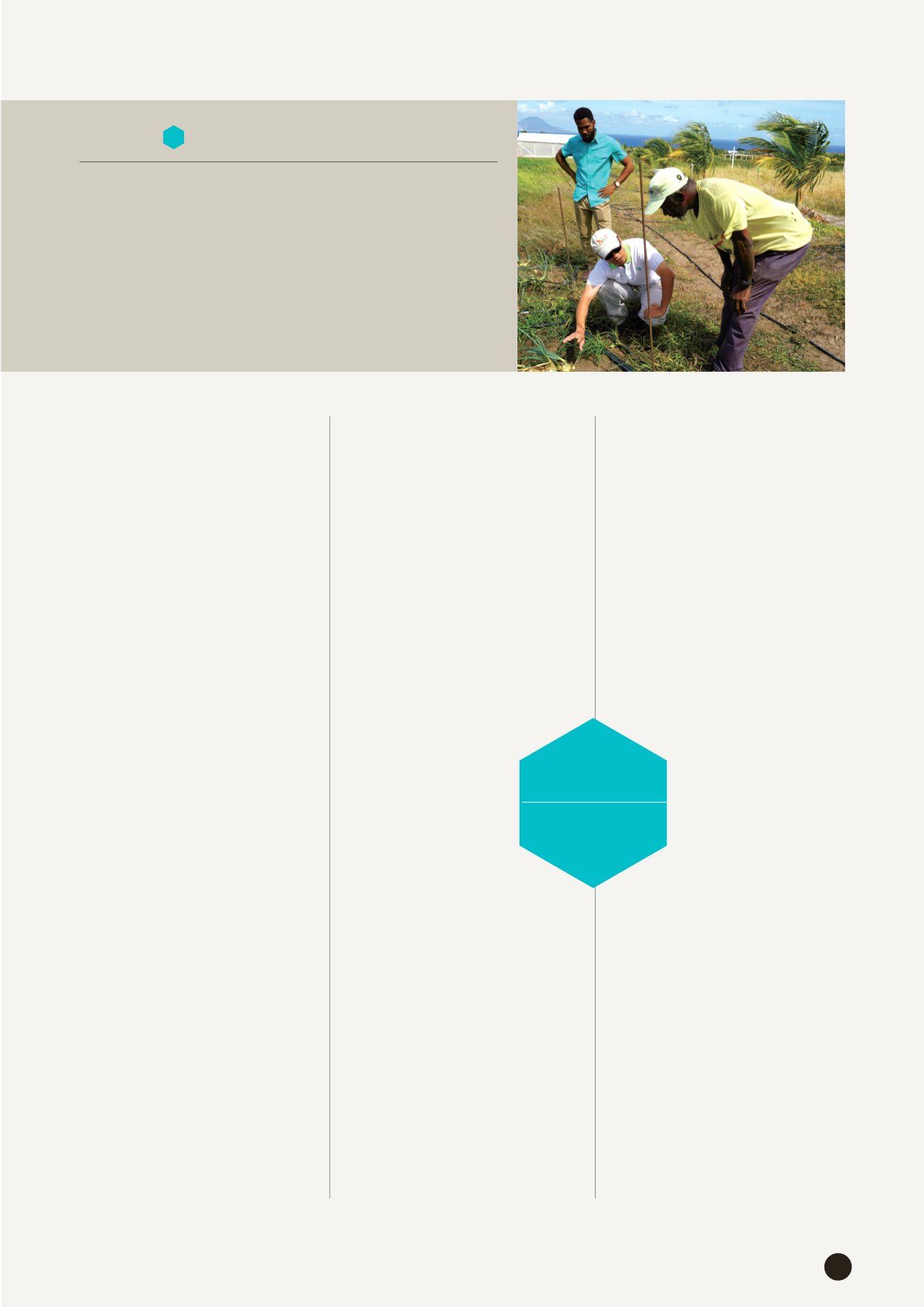

Operations
23
Since 2005, St. Kitts and Nevis has
combined the agriculture industry
with tourism in hopes that the tourist
industry will become an engine for
economic development. However,
restricted by a single crop agricultural
structure, farmers rely on a limited
selection of expensive imported
fertilizers and lack for concepts and
techniques associated with the use
of fertilizers and safe application of
pesticides. In addition, there is no
harvest data monitoring and no pre-
market pesticide residue detection
system. This has led to the need to
import more than a US$40 million
worth of agricultural products every
year to supply the needs of tourist
hotels and supermarket chain stores.
To solve this long-standing
problem, the government of St. Kitts
and Nevis proposed this project,
hoping that it could help raise
agricultural yields and quality, and
thereby improve the agriculture
industry and reduce the foreign
exchange losses from agricultural
imports.
The First Rapid Pesticide
Residue Detection System in
the Caribbean
To guarantee agricultural safety,
this project draws inspiration from
Good Agricultural Practices (GAP)
and first introduced Taiwan's Rapid
Bioassay for Pesticide Residues
(RBPR) technology and Vegetable
and Fruit Safety Mark standards
to help St. Kitts and Nevis create a
rapid pesticide residue detection
system. This would be a first for the
Caribbean region and of landmark
significance. Secondly, the project
promoted an understanding of
Integrated Pest Management (IPM),
carrying out environmentally friendly
field management. In addition, the
project enhanced agricultural crop
quality and stabilized crop yields,
crop varieties and crop supply
through water resource management,
improved soil analysis, promotion of
compost making, and the rational
application of fertilizers.
The laboratory for soil fertility
analysis and RBPR were put into
operation in July 2015.
The government of St.
Kitts and Nevis has
promoted legislation for
the Vegetable and Fruit
Safety Mark by setting
up a demonstration
farmers’ organization
and conducting project
briefings to increase
farmers’ willingness to
participate and increase
confidence among distributors and
consumers, as well as popularized a
mark certification system. In addition,
the project has built a compost
demonstration site and composting
stations for farmers, begun compost-
making and fertilizing experiments,
and collected the relevant data for
cost-effectiveness analysis.
Following the promotion of the
Vegetable and Fruit Safety Mark,
farmers will get in the habit of
recording the kind of pesticide they
are using, frequency of use, and time
of last pesticide use. During the twice
weekly field inspection visits, the
project team and St. Kitts and Nevis
agriculture extension personnel will
help farmers to identify various plant
diseases and insect pest damage,
make on - s i t e d i agnoses and
provide suggestions on prevention
and cure. In this way, farmers can
accumulate firsthand information
and control the outbreak of disease
and pest damage to facilitate the
comprehensive promotion of a
traceability system in the future. It is
anticipated that 30 percent of local
fruits, vegetables and upland crops
will be screened for
pes t i c i des p r i o r t o
reaching the market,
and farmers who have
received guidance will
see an average of 10
percent growth in per-
unit area crop yields.
30
Percentage of crops
undergoing pesticide residue
screening
%
St. Kitts and Nevis
Vegetable, Fruit and Upland Crop Quality
and Safety Improvement Project
3
Case Study


















